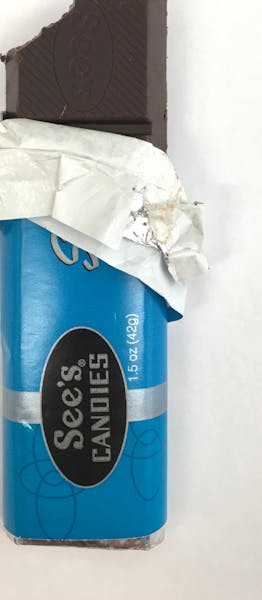First, you have to sign a waiver acknowledging that what you are about to do could trigger PTSD — or cause bodily harm. Then, you're given a "safe word" to yell if you get too frightened and need to escape. And that's before you even descend the stairs to the Haunted Basement at the Soap Factory art gallery in Minneapolis.
Extreme Halloween attractions like this are a far cry from family-friendly haunted hayrides. More and more, haunt-makers are upping the ante with terrifying blood-soaked scenes ripped from the headlines. They're doing so, they say, because audiences have become so accustomed to real-world terrors that it takes more than a ghostly "boo!" to thrill them.
"Realism is now where it's at," said Bill Zywiec, owner of the Haunting Experience in Cottage Grove.
These days, you can spend a sleepless night camping in "haunted" woods. Or make your way through a suburban kitchen that's been the scene of a horrific crime. Or allow deformed, human monsters to grab you.
"The world has changed," said Jean Sockness, who runs Terror Trail Camping, the overnight experience in the woods of Chisago City, Minn. "I think people expect more and more."
Sockness has been in the haunted house business 25 years, but this is the first time she's taken the fright overnight. At the new attraction, campers can select the "zombie" tent, which promises "endless frightning [sic] interaction keeping you in an endless state of terror," through visits from the undead.
Scaring people is big business. The Haunted House Association estimates there are 4,000 attractions around the world, from corn mazes and hayrides to blood-and-guts bonanzas, creating a $400 million industry globally. The quest to wow customers with the newest, most heart-stopping scare has turned more haunts into torture fests.
At the Haunting Experience, Zywiec has had to adapt to audiences' more extreme tastes.
When he launched the haunted house in the 1980s, the scares were limited by a need to be "clean," appealing to families with minimal gore, said Zywiec.
"Back then, we'd always try to push the limit, but we'd get responses that we were way over the top," he said.
Now the 8,000-square-foot house of horrors includes a kitchen that looks like Julia Child went apocalyptic, with an exploded microwave filled with fake blood and hair, and replica bones and guts strewn about.
We have become more used to seeing gore, but there's also a psychological reason some of us like fright nights.
Being scared can create a natural high that comes from a release of pleasure-inducing chemicals, said William Engeland, a neuroscience researcher at the University of Minnesota.
There's another lure for thrill seekers: They know it's not real. While these places may look like murder scenes, no one expects to die.
"Individuals who are more prone to go to haunted houses, they're pretty well assured that nothing is going to harm them," Engeland said. "They're in a safe environment, but they enjoy the idea of something jumping out at them."
They enjoy it so much that they're willing to risk the nightmares that could haunt them afterward, he said.
Plus, they get the benefit of feeling in control at a Halloween attraction, which they don't have when it comes to real-life terrors.
"Living in a fear-consumed society, we are getting all these messages that we should be afraid, and it hangs on us in anxiety-inducing ways," said Margee Kerr, a University of Pittsburgh sociologist who studies the science of fear.
But haunted houses, like scary movies, are "very controlled," she said. "We're the ones in the driver's seat, and we're able to feel that physical tightness and make it to the other side, and have a sense of closure."
Joni Van Bockel, marketing and outreach coordinator for the Soap Factory, sees that closure — even pride — in the participants who make it through the Haunted Basement. That's why the basement's designers try to come up with ever more frightening ideas.
In this new wave of Halloween haunts, ghosts and werewolves have been replaced by creepy clowns and blood-spattered psychos that distort everyday life.
"There's an element of trying to one-up what they've done before," Van Bockel said, "and delve into psychological terrors."
Sharyn Jackson • 612-673-4853
@SharynJackson
Heart, the band that proved women could rock hard, reunite for a world tour and a new song
Dick Van Dyke earns historic Daytime Emmy nomination at age 98

Sound Advice: Stick with what works for you

On the Wolves' playoff menu: Surf and turf, Ann Kim's Korean ribs and Marc Heu's pastries

